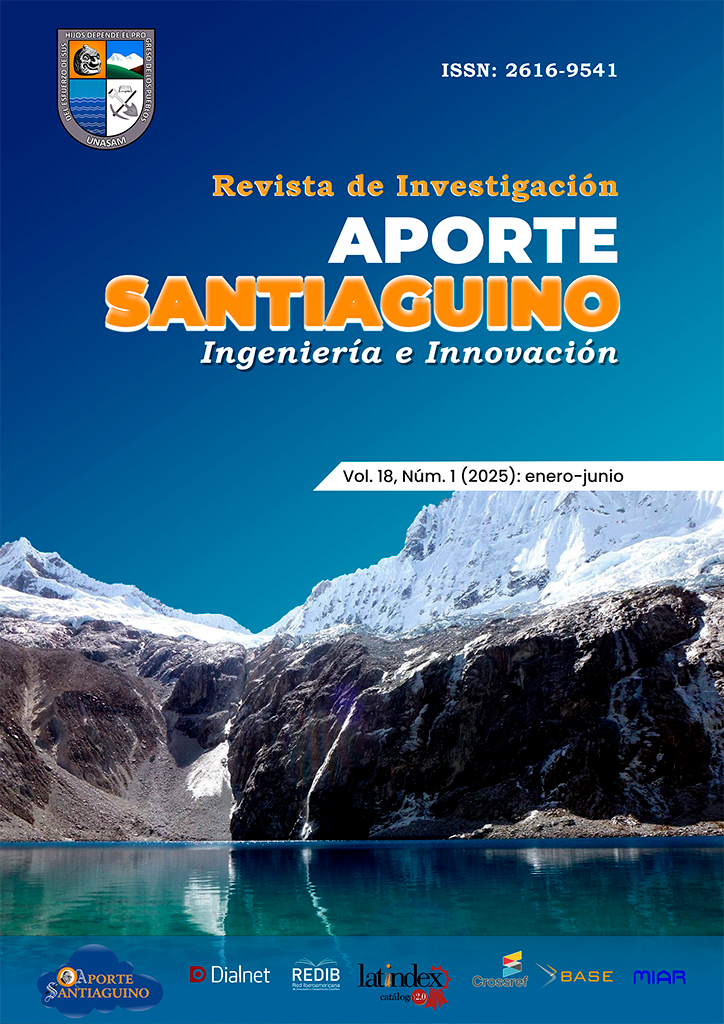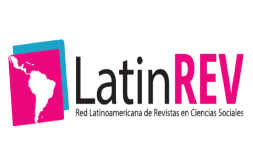Radio link and early warning against an alluvium of Palcacocha Lagoon in Huaraz - 2025
DOI:
https://doi.org/10.32911/as.2025.v18.n1.1236Keywords:
Early warning, Flood, Radio link, Natural disasterAbstract
The objective of this study was to determine the relationship between radio link and early warning in the event of a flood in the Palcacocha Lagoon in Huaraz. The methodology was quantitative, with a non-experimental, cross-sectional, and correlational design. The instrument was a questionnaire, administered to 68 residents of the city of Huaraz. The Spearman's Rho correlation coefficient was 0.595, with a significance level of 0.000, less than 5%. Therefore, the null hypothesis was rejected and the alternative hypothesis accepted. This showed a medium positive relationship between radio link and early warning in the event of a flood. Likewise, a medium positive correlation was found between autonomous radio link and the early warning dimension in the event of a flood according to Spearman's Rho of 0.628. Finally, a low positive correlation was found between autonomous radio link and the early response dimension in the event of a flood according to Spearman's Rho of 0.445. To ensure the reliability of the questionnaire, Cronbach's alpha was applied, obtaining 0.945 for the radio link variable and 0.845 for early warning. It is concluded that a good radio link system will improve early warning for the Palcacocha Lagoon flood in Huaraz. Information and Communication Technologies, through radio link devices that allow long-distance communication. In society, they have revolutionized the way we live, work and communicate, particularly in the city of Huaraz and the snow-capped mountains of the Cordillera Blanca (Palcacocha Lagoon), proposing solutions to natural disasters, implementing an Early Warning System, which allows for sustainable development, facing current and future challenges.
Downloads
References
Arias, F. (2016). El proyecto de investigación: Introducción a la metodología (2da ed. ed.). El Pasillo.
Arias, J. (2020). Técnicas e instrumentos de investigación científica, para ciencias administrativas, aplicadas, artísticas, humanas (1ra. Ed. ed.). Enfoques Consulting.
Barragán, A. M.-F. (2021). Investigación docente e investigación en educación: Nuevos enfoques en la metodología docente. Dykinson.
Borda, L. (2018). Efectividad del sistema de alerta temprana en huaycos e inundaciones en el Distrito de Parcona [Tesis de maestría, Universidad Cesar Vallejo]. https://core.ac.uk/download/326616029.pdf
Carhuancho, I. N. (2019). Metodología para la investigación holística (1ra. Ed. ed.). Universidad Internacional del Ecuador.
CONCYTEC (1 de Setiembre de 2021). Reglamento de calificación, clasificación y registro de los investigadores del Sistema Nacional de Ciencia, Tecnología e Innovación Tecnológica – Reglamento RENACYT. https://portal.concytec.gob.pe/images/noticias/Manual_del_Reglamento_RENACYT_1.pdf
Corral, Y. (2009). Validez y confiabilidad de los instrumentos de investigación para la recolección de datos. Revista Ciencias de la Educación, 19(33), 229-247.
Cozby, P. (2020). Methods in Behavioral Research. McGraw-Hill.
Dávila, D. (2016). Sistemas de alerta temprana ante inundaciones en América Latina. Soluciones Prácticas.
Díaz, R. (2015). Diseño de radioenlace microondas isla San Lorenzo – Campus PUCP para el Proyecto Perú Magneto [Tesis para optar el título de Ingeniero de las Telecomunicaciones, Pontificia Universidad Católica del Perú].
https://tesis.pucp.edu.pe/server/api/core/bitstreams/03a11c92-fdd2-42ca-a6d9-7bce4d8ebfd1/content
George, D. &. (2003). SPSS for Windows step by step: A simple guide and reference. 11.0 Update. Allyn and Bacon.
Healey, J. (2013). The essential of statistics: A tool for social research. (3ra ed. ed.). Cengage Learning.
Hernández, R., Fernández, C., & Baptista, M. (2014). Metodología de la investigación. México DF: Mac GrawHill.
Hurtado, J. (2000). Metodología de la Investigación Holística. Fundación Sypal.
INDECI (2015). Plan de prevención ante desastres: usos del suelo y medidas de mitigación Ciudad de Huaraz. Huaraz: Programa de las naciones unidas para el desarrollo (PNUD). INDECI.
INDECI (Enero de 2019). Lineamientos para la conformación y funcionamiento de la Red Nacional de Alerta Temprana RNAT.
https://portal.indeci.gob.pe/wp-content/uploads/2019/01/201705101219311.pdf
INEI (2017). Censo Nacional. https://www.gob.pe/inei/
Instituto Nacional de Defensa Civil (2018). Compendio estadístico del INDECI 2018, Preparación - Respuesta - Rehabilitación. Biblioteca del Instituto Nacional de Defensa Civil.
Malhotra, N. (2008). Investigación de mercados. (5ta ed. ed.). Pearson.
O’Dwyer, L. &. (2014). Quantitative Research for the Qualitative. Sage.
Ortiz, S. (2018). Propuesta de un sistema de alerta temprana por inundación en la cuenca del río Lucre–Cusco 2018 [Tesis para optar el título de Ingeniero Ambiental, Universidad Andina de Cusco]. https://repositorio.uandina.edu.pe/item/8c7557e9-bfa4-456d-aa25-c2e00adfa339
Pañora, U., & Ramirez, A. (2015). Diseño y simulación del sistema de alerta temprana de tsunamis para las zonas sensibles de la región costanera del cantón esmeraldas [Informe previo a obtención de título de ingeniero en electrónica y telecomunicaciones, Escuela Superior Politécnica del Litoral]. https://www.dspace.espol.edu.ec/xmlui/bitstream/handle/123456789/39723/T-84966%20PA%c3%91ORA-RAMIREZ.pdf?sequence=1&isAllowed=y
Soacha, A. (2014). Estudio de la viabilidad técnica para integrar los planes de fibra óptica con accesos inalámbricos de banda ancha en zonas rurales en las bandas de 450-470MHz y dividendo digital [Tesis de maestría, Universidad Nacional de Colombia]. https://repositorio.unal.edu.co/bitstream/handle/unal/49466/02822346.2014.pdf?sequence=1&isAllowed=y
Tito, A. (2017). Participación comunitaria y la seguridad ciudadana en la región Lima, 2012-2014. Centro de Altos Estudios Nacionales.
UNESCO. (2016). Manual de sistema de alerta temprana. Unesco.
Valdez, A. (2015). Sistema de monitoreo y alerta temprana de aluviones en la quebrada Huaycoloro para el Instituto Geofísico del Perú y Sedapal [Tesis para optar el título de ingeniero en electrónico, Universidad Nacional de Ingeniería].
Vicencio, O. (2018). La investigación en las ciencias sociales (2da ed. ed.). Editorial Trillas.
Welch, S. (1988). Quantitative methods for public administration: Techniques and applications. Dorsey Press.
Downloads
Published
How to Cite
Issue
Section
License
Copyright (c) 2025 Luis Alvarado Cáceres

This work is licensed under a Creative Commons Attribution 4.0 International License.




















